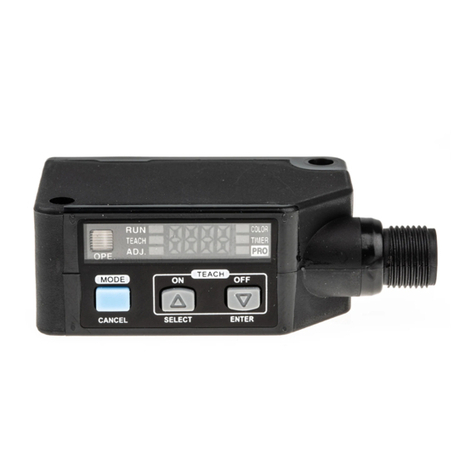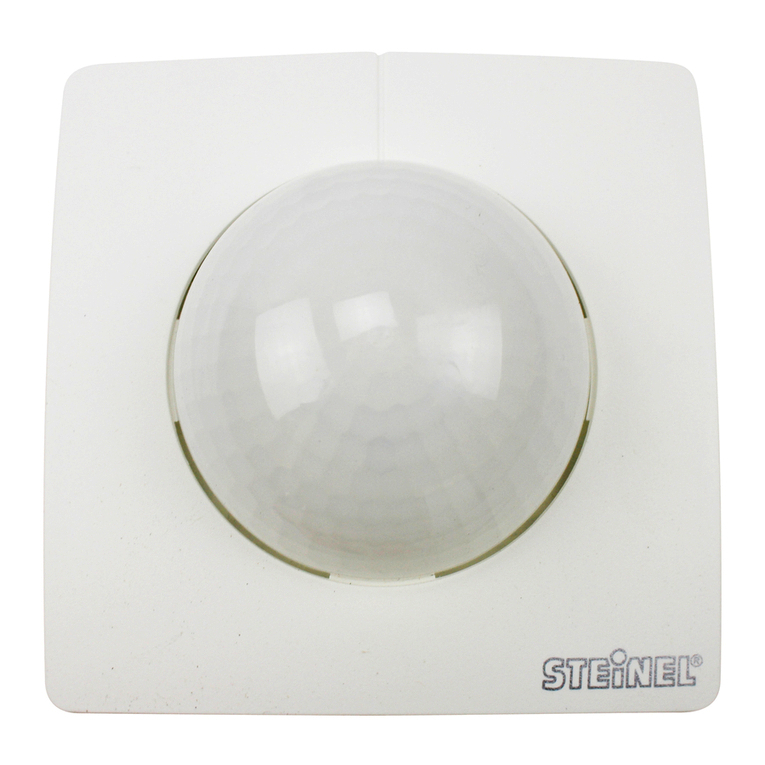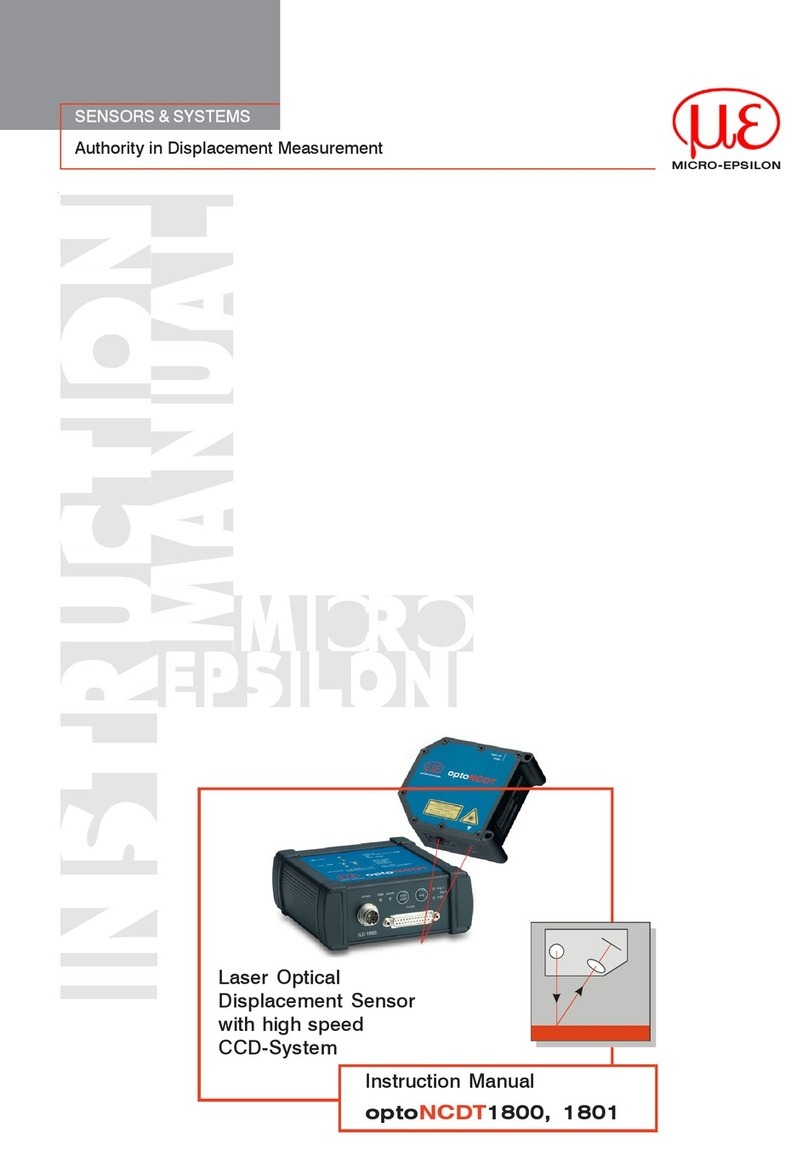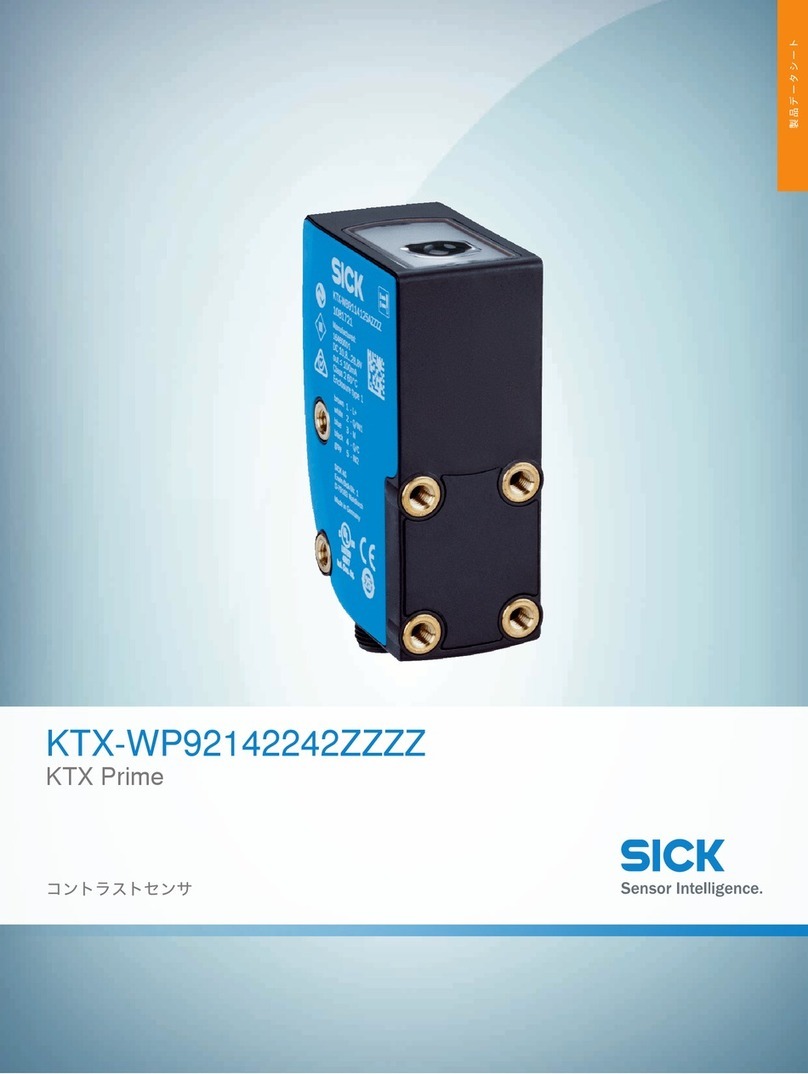iess IE 326H-2L User manual

MANUALE TECNICO
TECHNICAL MANUAL
Sensore di temperatura convenzionale
Conventional temperature detector
mod. IE 326H-2L
090010282
2531-CPR-232.1664
Norme / Standards
EN54-5:2000/A1:2002
14

2
IE 326H-2L - MANUALE TECNICO - 090010282
AVVERTENZE PER LO SMALTIMENTO - INFORMAZIONI AGLI UTENTI
AVVERTENZE
PER L’INSTALLATORE:
Attenersi scrupolosamente alle norme operanti sulla realizzazione di impianti elettrici e sistemi di sicurez-
za, oltre che alle prescrizioni del costruttore riportate nella manualistica a corredo dei prodotti.
Fornire all’utilizzatore tutte le indicazioni sull’uso e sulle limitazioni del sistema installato, specificando che
esistono norme specifiche e diversi livelli di prestazioni di sicurezza che devono essere commisurati alle
esigenze dell’utilizzatore.
Far prendere visione all’utilizzatore delle avvertenze riportate in questo documento.
PER L’UTILIZZATORE:
Verificare periodicamente e scrupolosamente la funzionalità dell’impianto accertandosi della correttezza
dell’esecuzione delle manovre di inserimento e disinserimento.
Curare la manutenzione periodica dell’impianto affidandola a personale specializzato in possesso dei re-
quisiti prescritti dalle norme vigenti.
Provvedere a richiedere al proprio installatore la verifica dell’adeguatezza dell’impianto al mutare delle
condizioni operative (es. variazioni delle aree da proteggere per estensione, cambiamento delle metodi-
che di accesso ecc...).
-------------------------------
Questo dispositivo è stato progettato, costruito e collaudato con la massima cura, adottando procedure
di controllo in conformità alle normative vigenti. La piena rispondenza delle caratteristiche funzionali è
conseguita solo nel caso di un suo utilizzo esclusivamente limitato alla funzione per la quale è stato rea-
lizzato, e cioè:
Sensore convenzionale a temperatura fissa
Qualunque utilizzo al di fuori di questo ambito non è previsto e quindi non è possibile garantire la sua cor-
retta operatività e pertanto è fatto espresso divieto al detentore del presente manuale di utilizzarlo per
ragioni diverse da quelle per le quali é stato redatto ovvero esplicative delle caratteristiche tecniche del
prodotto e delle modalità di uso.
I processi produttivi sono sorvegliati attentamente per prevenire difettosità e malfunzionamenti; purtutta-
via la componentistica adottata è soggetta a guasti in percentuali estremamente modeste, come d’altra
parte avviene per ogni manufatto elettronico o meccanico. Vista la destinazione di questo articolo (pro-
tezione di beni e persone) invitiamo l’utilizzatore a commisurare il livello di protezione offerto dal sistema
all’effettiva situazione di rischio (valutando la possibilità che detto sistema si trovi ad operare in modalità
degradata a causa di situazioni di guasti od altro), ricordando che esistono norme precise per la proget-
tazione e la realizzazione degli impianti destinati a questo tipo di applicazioni.
Richiamiamo l’attenzione dell’utilizzatore (conduttore dell’impianto) sulla necessità di provvedere regolar-
mente ad una manutenzione periodica del sistema almeno secondo quanto previsto dalle norme in vigore
oltre che ad effettuare, con frequenza adeguata alla condizione di rischio, verifiche sulla corretta funzio-
nalità del sistema stesso segnatamente alla centrale, sensori, avvisatori acustici, combinatore/i telefoni-
co/i ed ogni altro dispositivo collegato. Al termine del periodico controllo l’utilizzatore deve informare
tempestivamente l’installatore sulla funzionalità riscontrata.
La progettazione, l’installazione e la manutenzione di sistemi incorporanti questo prodotto sono riservate
a personale in possesso dei requisiti e delle conoscenze necessarie ad operare in condizioni sicure ai fini
della prevenzione infortunistica. E’ indispensabile che la loro installazione sia effettuata in ottemperanza
alle norme vigenti. Le parti interne di alcune apparecchiature sono collegate alla rete elettrica e quindi
sussiste il rischio di folgorazione nel caso in cui si effettuino operazioni di manutenzione al loro interno
prima di aver disconnesso l’alimentazione primaria e di emergenza. Alcuni prodotti incorporano batterie
ricaricabili o meno per l’alimentazione di emergenza. Errori nel loro collegamento possono causare danni
al prodotto, danni a cose e pericolo per l’incolumità dell’operatore (scoppio ed incendio).
Ai sensi della Direttiva 2012/19/UE, relativa allo smaltimento dei rifiuti di apparecchiature elettriche ed
elettroniche (RAEE), si precisa che il dispositivo AEE è immesso sul mercato dopo il 13 agosto 2005
con divieto di conferimento all’ordinario servizio di raccolta dei rifiuti urbani.

3
090010282 - MANUALE TECNICO - IE 326H-2L
1. GENERALITA’
Il sensore IE 326H-2L appartiene alla famiglia di sensori IE326 da installare in impianti antincendio gover-
nati da centrali convenzionali serie CF e compatibili. Questo rilevatore interviene quando la temperatura am-
bientale raggiunge il valore di taratura.
Il sensore IE 326H-2L è dotato di una linea estetica piacevole e di un basso profilo per non creare problemi
di installazione anche in ambientazioni ricercate.
Il sensore IE 326H-2L è dotato di un circuito elettronico particolarmente immune a disturbi elettrici e RF; è
inoltre approvato secondo norma EN 54, parte 5 e dotato di dichiarazione di conformità e prestazione CPR
2531-CPR-232.1664.
2. CARATTERISTICHE TECNICHE
3. COLLEGAMENTI ELETTRICI
Mod. IE 326H-2L
Collegamenti: con cavo a due fili
Alimentazione: 10-35V
Assorbimento: modalità stand-by 55A.
Modalità in allarme 50mA.
Tempo di inibizione sensore
all’accensione: 60 secondi.
Soglia di allarme: temperatura a 57°C (settata di default).
Sensibilità
termovelocimetrica: Corrispondente alla classe A2 secondo EN54-5.
Frequenza del LED: 4-6 secondi
Dimensioni e peso: Ø98mm, H45mm, 140g
Temperatura amb.: da -10°C a +50°C.
Certificazioni: Standard EN-54-5; conformità CE;
CPR 2531-CPR-232.1664.
Dotazione: base, manuale tecnico.

4
IE 326H-2L - MANUALE TECNICO - 090010282
4. PRECAUZIONI E AVVERTENZE
Questo sensore è stato progettato per attivare un’azione di emergenza, ma opererà appropriatamente solo con sistemi
di rilevazione incendi autorizzati. Questo sensore deve essere installato secondo le norme del paese dove viene eseguita
l'installazione.
Lo scopo del rilevatore è quello di proteggere proprietà fisiche, e non persone. I sensori non forniscono avvisi anticipati
di incendio e sono incapaci di rilevare fumo, gas, particelle in combustione o fiamme. L’allarme si attiverà quando la tem-
peratura ad altezza installazione raggiungerà i 57°C. Data la rapida combustione di alcuni tipi di fuoco, c’è da considerare
che i rilevatori termici non possono fornire avvisi adeguati relativi a incendi risultanti da comportamenti inappropriati (es.:
fumare a letto, pratiche inadeguate di protezione dal fuoco, esplosioni violente, fughe di gas e conservazione impropria di
liquidi infiammanti quali solventi per pulizie).
La manutenzione del sensore deve essere periodica e costante, in quanto sporcizia e polvere che si depositano all’in-
terno, potrebbero originare dei falsi allarmi.
Sostituire i sensori ogni dieci anni.
Non tentare di smontare le parti assemblate dal produttore. Gli elementi con chiusura stagna non devono essere ma-
nomessi o aperti dall’utente finale.
Disassemblare il corpo del sensore invaliderà la garanzia.
5. INSTALLAZIONE
5.1 Installazione della base del sensore
Nel caso in cui si utilizzi un pezzo di cavo per connettere i poli dei morsetti 2 e 5 per testare la continuità del
la linea, rimuovere questo cavo prima dell'installazione del corpo del sensore.
Verificare che l’ultimo dispositivo sulla linea sia compatibile con la centrale.
I rivelatori di temperatura sono adatti per installazione a soffitto o a muro in accordo con gli standard antin-
cendio vigenti nel paese.
La base del sensore di temperatura può essere installata direttamente su una scatola di derivazione (otta-
gonale, 75mm, 90mm, o 100mm; rotonda, 75mm; quadrata 100mm) senza che sia necessario l'utilizzo di un
adattatore meccanico.
5.2 Installazione del corpo del sensore
- Allineare i vari elementi come illustrato in figura.
- Posizionare il corpo del sensore sulla base, facendo combaciare i due elementi, e avvitare in senso orario
per assicurarli.
- Installare il corpo del rivelatore solo dopo aver eseguito un’accurata pulizia dell’area, con rimozione di pol-
vere e di detriti. Il numero massimo di sensori di fumo che possono essere collegati è di 32 unità per linea.
Per prevenire danni al sensore e, quindi, l’invalidazione della garanzia, è necessario non rimuovere la protezione
plastica del sensore fino al termine dell’installazione

5
090010282 - MANUALE TECNICO - IE 326H-2L
5.3 Test del sensore
Tutti i servizi di segnalazione di allarme, i dispositivi di rilascio (es. delle porte tagliafuoco, ecc.), e il sistema
di estinzione incendio, dovrebbero essere disattivati durante i test, quindi riattivati immediatamente dopo.
Dopo avere alimentato il corpo del sensore per approssimativamente un minuto verificare che l’indicatore
a LED rosso lampeggi una volta ogni 4-6 secondi. Se così non fosse, il sensore potrebbe essere difettoso o i
cablaggi potrebbero non essere stati effettuati appropriatamente. Ricontrollare i cablaggi o sostituire il sensore.
Il sensore da controllare dovrebbe essere soggetto a un flusso di aria calda di temperatura tra 65 e 80°C (è
possibile utilizzare dei normali asciugacapelli per raggiungere tale temperatura).
Procedimento:
- Attivare il flusso di aria calda e verificare che la temperatura sia corretta e stabile.
- Mantenendosi ad una distanza ragionevole, dirigere il flusso di aria verso il sensore. Questo dovrebbe
rilevare l’allarme entro trenta secondi.
- Quando l’allarme scatta, rimuovere immediatamente il flusso di aria calda e verificare che il LED rosso
del sensore sia illuminato. Resettare, quindi, il sensore dalla centrale.
- Se il sensore non rileva l’allarme entro 30 secondi significa che la sensibilità è impostata su un valore
troppo basso e necessita di essere regolata nuovamente. Per questa procedura, rivolgersi al fornitore.
- Una volta ultimato il test, verificare che il sistema sia settato per l’operatività normale e avvisare le autorità
competenti che l’operazione è conclusa e che il sistema è nuovamente attivo.
6. INDICE
1. GENERALITA’ - - - - - - - - - - - - - - - - - - - - - - - - - - - - - - - - - - - - - - - - - - - - - - - - - - - - - - - - - - - - - - - - - - - 3
2. CARATTERISTICHE TECNICHE - - - - - - - - - - - - - - - - - - - - - - - - - - - - - - - - - - - - - - - - - - - - - - - - - - - - - - 3
3. COLLEGAMENTI ELETTRICI - - - - - - - - - - - - - - - - - - - - - - - - - - - - - - - - - - - - - - - - - - - - - - - - - - - - - - - - 3
4. PRECAUZIONI E AVVERTENZE- - - - - - - - - - - - - - - - - - - - - - - - - - - - - - - - - - - - - - - - - - - - - - - - - - - - - - - 4
5. INSTALLAZIONE - - - - - - - - - - - - - - - - - - - - - - - - - - - - - - - - - - - - - - - - - - - - - - - - - - - - - - - - - - - - - - - - - 4
5.1. Installazione della base del sensore - - - - - - - - - - - - - - - - - - - - - - - - - - - - - - - - - - - - - - - - - - - - - - 4
5.2. Installazione del corpo del sensore - - - - - - - - - - - - - - - - - - - - - - - - - - - - - - - - - - - - - - - - - - - - - - - 4
5.3. Test del sensore - - - - - - - - - - - - - - - - - - - - - - - - - - - - - - - - - - - - - - - - - - - - - - - - - - - - - - - - - - - - - 5
6. INDICE - - - - - - - - - - - - - - - - - - - - - - - - - - - - - - - - - - - - - - - - - - - - - - - - - - - - - - - - - - - - - - - - - - - - - - - - - 5

IE 326H-2L -TECHNICAL MANUAL - 090010282
6
DISPOSAL INSTRUCTIONS
FOREWORD
FOR THE INSTALLER:
Please follow carefully the specifications relative to electric and security systems realization further to the
manufacturer's prescriptions indicated in the manual provided.
Provide the user the necessary indication for use and system's limitations, specifying that there exist
precise specifications and different safety performances levels that should be proportioned to the user
needs. Have the user view the directions indicated in this document.
FOR THE USER:
Periodically check carefully the system functionality making sure all enabling and disabling operations
were made correctly.
Have skilled personnel make the periodic system's maintenance. Contact the installer to verify correct
system operation in case its conditions have changed (e.g.: variations in the areas to protect due to
extension, change of the access modes, etc…)
......................................................
This device has been projected, assembled and tested with the maximum care, adopting control
procedures in accordance with the laws in force. The full correspondence to the functional characteristics
is given exclusively when it is used for the purpose it was projected for, which is as follows:
Conventional temperature detector
Any use outside of this area is not provided and it is not possible to guarantee its proper operation, and
therefore it is expressly forbidden to the holder of this manual to use it for other reasons than those
indicated.
The manufacturing process is carefully controlled to prevent defects and malfunctions; nevertheless the
components used is subjected to faults extremely low percentage, as indeed it does for every other
electronic or mechanical.
Given the target of this article (property and persons protection) invite the user to proportion the
protection level offered by the system to the actual risk (considering the possibility that the system it is
operating in degraded mode due to faults or other), reminding that there are clear rules for the design and
construction of equipment to this type of application.
The system's operator is hereby advised to see regularly to the periodic maintenance of the system, at
least in accordance with the provisions of current legislation, as well as to carry out checks on the correct
running of said system on as regular a basis as the risk involved requires, with particular reference to the
control unit, sensors, sounders, dialler(s) and any other device connected. The user must let the installer
know how well the system seems to be operating, based on the results of periodic checks, without delay.
Design, installation and servicing of systems which include this product, should be made by skilled staff
with the necessary knowledge to operate in safe conditions in order to prevent accidents. These systems'
installation must be made in accordance with the laws in force. Some equipment's inner parts are connect-
ed to electric main and therefore electrocution may occur if servicing was made before switching off the
main and emergency power. Some products incorporate rechargeable or non rechargeable batteries as
emergency power supply. Their wrong connection may damage the product, properties and the operator's
safety (burst and fire).
According to Directive 2012/19/EU on the Waste of Electric and Electronic Equipment (WEEE),
it is here specified that this Electrical-Electromechanic Device started to be commercialized after
13th August 2005, and it shall be disposed of separately from ordinary waste products.

090010282 -TECHNICAL MANUAL - IE 326H-2L
7
7. GENERAL
IE 326H-2L sensor is part of a new detectors series range, IE326, suitable to be used within system mana-
ged by CF series fire alarm conventional control panels (and other compatible). Alarm temperature is set to
57°C, therefore the temperature detector element is activated also when the air reaches that temperature.
Smart design and low profile allow the detector to be installed in special demanding environments unobtrusi-
vely.
IE 326H-2L detector has also a built in electronic circuit featuring RF and electrical disturbancies immunity.
It complies with EN 54 standard, part 5 and has declaration of conformity and performance CPR 2531-CPR-
232.1664.
8. TECHNICAL SPECIFICATIONS
9. WIRING DIAGRAM
10. WARNINGS
This heat detector is particularly designed to initiate and activate emergency action, but will do so only when used to-
gether with an authorized fire alarm system. This detector must be installed in compliance with the laws in force in the coun-
try where the product is installed..
This heat detector is meant to protect property, not life. Heat detectors do not provide early warning of fire and cannot
detect smoke, gas, combustion particles, or flame. They will alarm when temperature at the heat detector reach 57°C or
above. Given the rapid growth of certain types of fires, heat detectors cannot be expected to provide adequate
Mod. IE 326H-2L Alarm temperature: 57°C fixed level (default setting).
Connections: 2-wire cable Rate of Rise
sensitivity: class A2 of EN54-5
Power supply: 10-35V Dimensions: Ø98mm, H45mm
Power consumption: stand-by 55A
alarm mode 50mA (
Weight: 140g
Standards: EN-54 standard; CE declaration of
conformity CPR 2531-CPR-232.1664.
Charging time: 60 secs Temperature range: -10°C / 50°C
LED blinking freq.: 4-6 secs Parts supplied: base, technical manual
To prevent detector contamination and subsequent warranty cancellation, do not remove the heat detector pla-
stic cover until the area is cleaned and dust free.

Sensore di temperatura convenzionale mod. IE 326H-2L - MANUALE TECNICO -
Conventional temperature detector mod. IE 326H-2L - TECHNICAL MANUAL -
Edizione Giugno 2012 rev. Novembre 2014 - Edition June 2012 rev. November 2014 090010282
Le informazioni e le caratteristiche di prodotto non sono impegnative e potranno essere modificate senza preavviso.
Product specifications as described above do not bind the manufacturer and may be altered without prior notice.
warning of fires resulting from dangerous behaviour (e.g.: smoking in bed, inadequate fire protection practices, violent
explosions, excaping gas, improper storage of flammable liquids, or other safety hazards).
Heat detectors will not detect smoke, gas, flames, or combustion particles. Heat detectors are components in profes-
sionally installed fire alarm systems.
The recommended detector maintenance consists of an regular cleaning of the detector head by using a vacuum clea-
ner. Maintenance operation depends on ambient conditions and should be carried out in compliance with the laws in force
in the country where the product is installed.
They should be tested and maintained following the instructions in this manual. To be safe, they should be replaced
after they have been installed for ten years.
Do not disassemble sensor head or any other parts. This will void product warranty.
11. INSTALLATION
11.1 Base installation
If you use a jumper wire to connect the poles of terminal 2 and
5 when testing the detector line continuity, be sure to remove the
jumper wire prior to the installation of the detector head. The end-
of-line device should be compatible with the control unit.
Open area heat detectors are intended for mounting on a ceiling
or a wall in accordance with the fire standard in your country.
Heat detector base can be mounted directly onto an electrical
junction box such as an octagonal one (75mm, 90mm, or 100mm),
a round one (75mm), or a square one (100mm) without using any
type of mechanical adapter.
11.2 Head installation
- Align the components as shown below.
- Match the detector head to the base and twist it clock-
wise to secure it.
- Do not install the detector head until the area is thor-
oughly cleaned of construction debris, dusts, etc.
- The maximum number of heat detector installed over the same line is 32 units.
11.3 Operational test
All the alarm signal services, releasing devices and the extinguisher system should be disengaged during
the test procedure and rnust be re-engaged irnmediately after the conclusion of testing. After energizing the
detector head for approximately one minute, check to see if the red LED indicator flashes once every 4-6 se-
conds. If LED fails to flash, it indicates the non-functioning of the detector or faulty wiring. Re-check the wiring
or replace the detector if necessary. The detector to be tested should be subject to a flow of warm air at a tem-
perature between 65°C and 80°C. (This requirement can be met by some domestic hair dryers).
Procedure step-by-step:
- Switch on the warm airflow and check that temperature is correct and stable.
- From a distance of several inches, direct the airflow at the guard protecting the thermistor. The detector
should alarm within 30 seconds.
- Upon alarm immediately remove the heat source and check that the red LED of the detector is illuminated.
- Reset the detector from the control panel.
- If detector fails to trigger, it may be too insensitive. Return it to the distributor for servicing.
- After testing, check that the system is set for normal operation and notify the appropriate authorities that
the testing operation is complete and the system is active.
12. CONTENTS
7. GENERAL 7
8. TECHNICAL SPECIFICATIONS 7
9. WIRING DIAGRAM 7
10. WARNINGS 7
11. INSTALLATION 8
11.1. Base installation 8
11.2. Head installation 8
11.3. Operational test 8
12. CONTENTS 8
Table of contents
Languages:
Popular Security Sensor manuals by other brands

Lince
Lince 1964-SAXA-A Installation, operation and maintenance manual
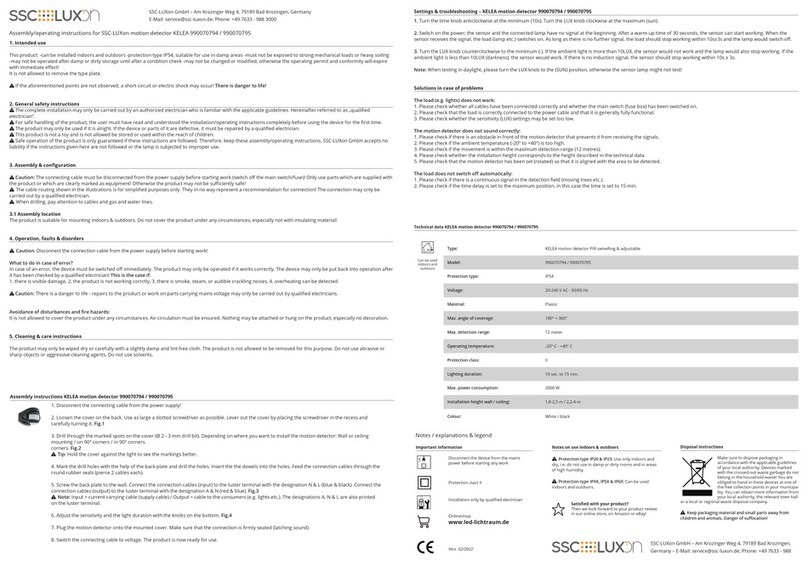
SSC
SSC KELEA 990070794 Assembly & operating instructions

IRD Mechanalysis
IRD Mechanalysis IRD811 Operation & maintenance manual

Filtec
Filtec FT-100 Operation guide

LCN
LCN 8310-854 user guide
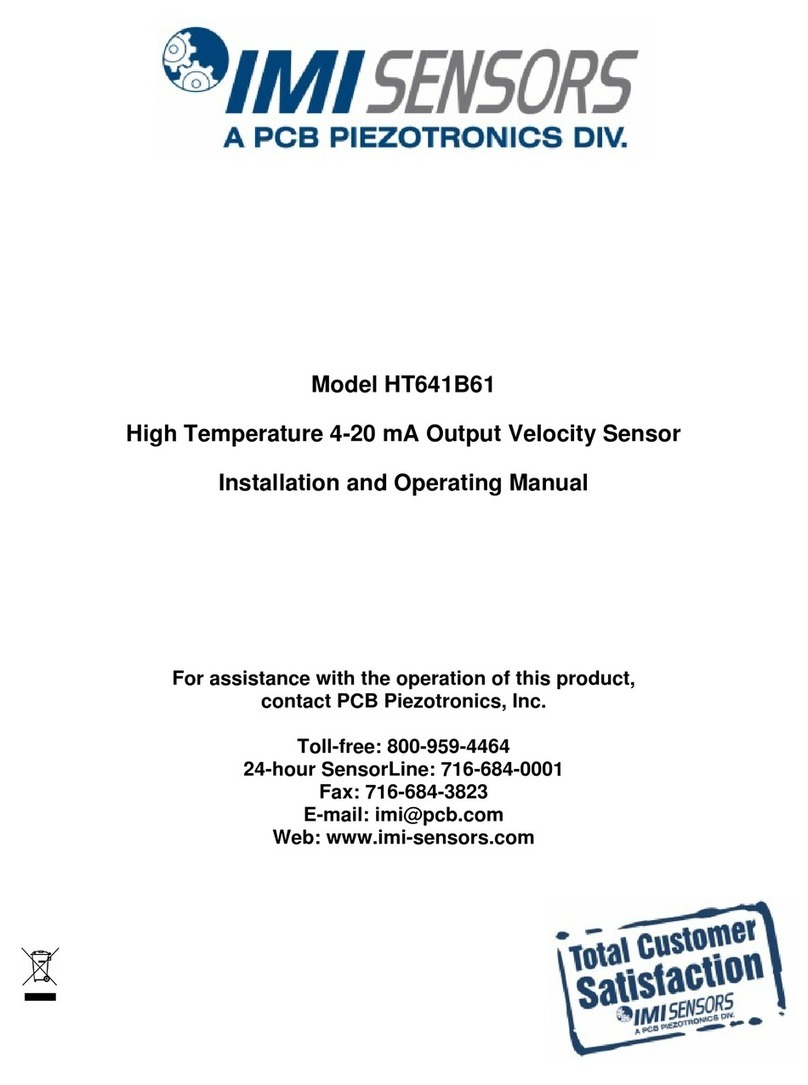
PCB Piezotronics
PCB Piezotronics IMI SENSORS HT641B61 Installation and operating manual

ipf electronic
ipf electronic UY000001 instruction manual
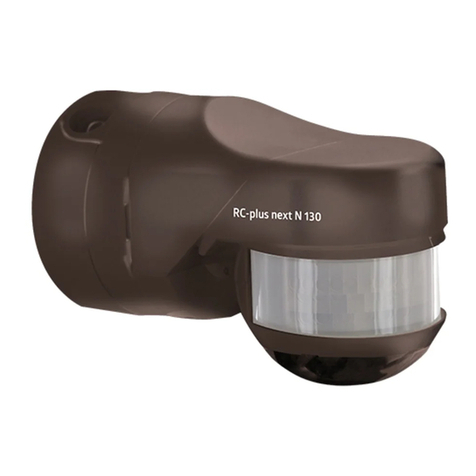
B.E.G.
B.E.G. RC-plus next 130 Operating and mounting instructions

schmersal
schmersal NDRR Series operating instructions
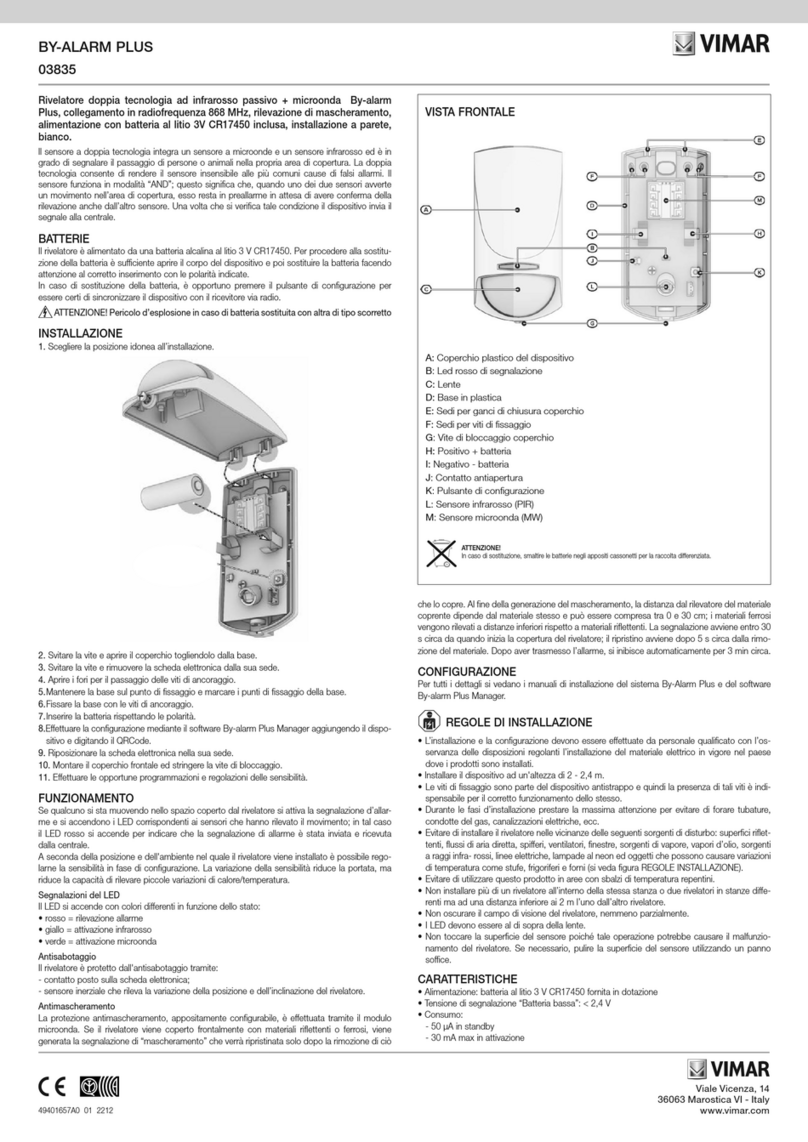
Vimar
Vimar BY-ALARM PLUS 03835 quick start guide
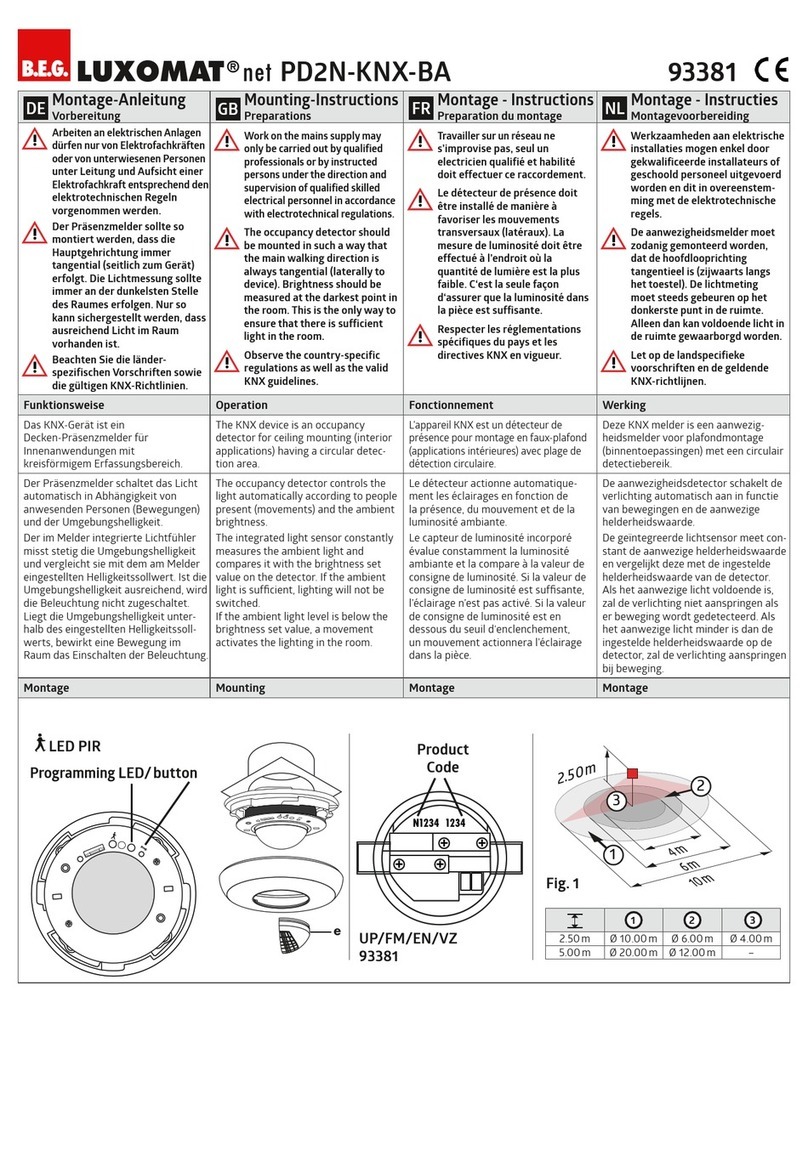
B.E.G. LUXOMAT
B.E.G. LUXOMAT PD2N-KNX-BA-EM Mounting instructions

Honeywell
Honeywell 5800PIR-OD Frequently asked questions

